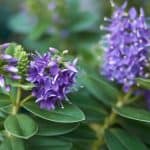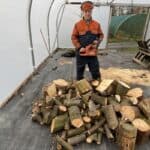Last updated on April 27th, 2022
Our site is reader supported, this means we may earn a small commission from Amazon and other affiliates when you buy through links on our site.
The flowering Dogwood is known for its beautiful bracts that appear around the late spring to early summer.
However, the most popular Dogwoods, the Cornus alba, Cornus sericea and Cornus sanguinea are actually grown for their stunning and brightly coloured stems, often yellow, red and even a firey orange depending on the variety have, and they make one of the most stunning winter displays you will ever see.
Finally, there is the lesser-known ‘Cornelian Cherry’, also known as the Cornus mas and is perfect for creating winter interest because it produces flowers throughout winter followed by fruit in summer.
Quick facts about Cornnus
- Flowering Dogwoods produce flowers between the end of spring and the beginning of summer.
- It is best planted between October and March and can often be purchased bare root during this time, offering excellent value for money.
- Most types reach an ultimate height of 3 metres and an eventual spread of 8 metres. They grow into a small tree but you can keep them much smaller with pruning, especially the varieties with vibrant stems, these can be pruned hard in spring to encourage the bright stems.
- It enjoys full sun to partial shade and will grow in most soil types.
- It is very resistant to frost making it a hardy shrub for sheltered and exposed areas.
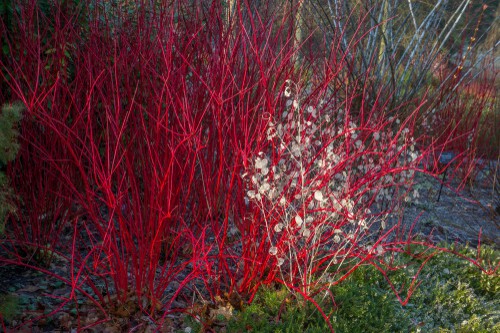
Growing Dogwood
Flowering Dogwoods
If you are growing a flowering Dogwood like the variegated Cornus florida ‘Cherokee Daybreak’ tree variety, you need to give it well-drained and fertile soil that is neutral or acidic. This species will tolerate full sun or partial shade but if you grow it in full sun you get a much better display of colour, which is particularly important if you are growing it specifically to have the winter stem colour in the colder seasons.
Shrubby Dogwoods – grown for winter stems
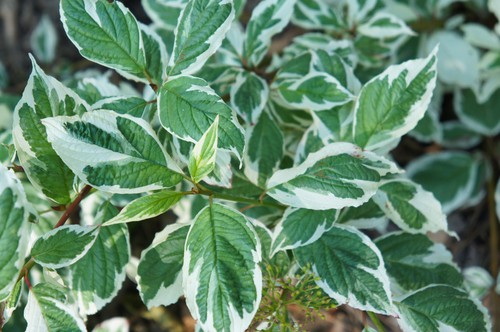
If you are growing the Cornus alba, Cornus sericea and Cornus sanguinea which are renowned for their brightly coloured winter stems, they will grow better in damp conditions where other types of Cornus (and other shrubs for that matter) might fail. Again, to get the most out of the winter stems they are best grown in full sun.
Creeping Dogwood – Cornus canadensis
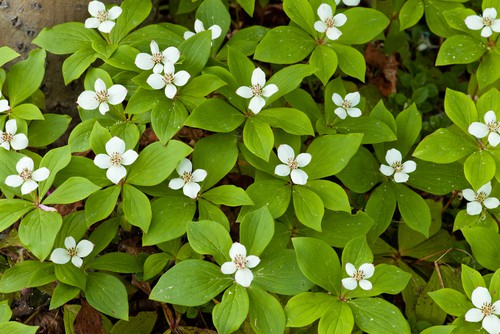
If you want to grow the Cornus canadensis, they need a more acidic soil so would benefit strongly from mixing in some ericaceous compost when planting and feeding them with an ericaceous feed.
Feeding and Watering
Keep them well watered while the plant establishes itself
It’s important to water Cornus thoroughly during the first few years you have planted the Dogwood and then to water thoroughly thereafter during any particularly dry spells.
Feeding Cornus
At the end of winter and beginning of spring as the Dogwood is getting ready to transition, top dress it with a slow-release fertiliser or feed it, for example, with a fish, blood and bone. If you noticed that the flowering was less than ideal, you can supplement the feed with a high potassium feed in the spring or the summer to help encourage better flowering but this is not always essential.
It’s important to add mulch around the base of the Dogwood to cover the roots in the spring and then again in the autumn, this also helps retain moisture because Cornus prefer being planted in moist soil.
Pruning Cornus
Given its size, for the varieties grown for their bright coloured winter stems, for example, the Cornus alba, Cornus sericea and Cornus sanguinea, you want to use a method of pruning called coppicing. Coppicing is where you prune it back every year to encourage new growth for the upcoming winter.
Pruning is best done between late March and early April just as the new growth is starting, and this will encourage more fresh growth and which will form the vibrant stems in winter. Don’t be afraid to prune them hard because they respond very well to this.
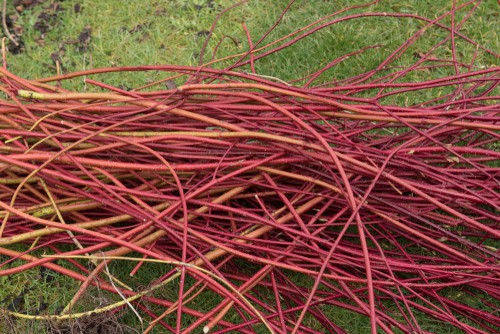
Flowering Cornus such as Cornus controversa, Cornus alternifolia and Cornus florida don’t require much, if any, pruning because they will naturally form their tree shape.
Pruning Cornus in shady areas
Less frequent pruning is required for Cornus planted in these locations, which means pruning every 2-3 years is best if you are growing your Dogwood in an area that is semi-shaded.
Pruning a newly planted Cornus
If you have a newly planted Dogwood, do not prune it in the first two or three years while it is establishing itself. Once it is fully established, then you can think about pruning.
Propagation – taking hardwood cuttings
You can propagate them from seed, however, it is better to use hardwood cuttings or semi-hardwood cuttings. Seeds don’t always come true to variety and cuttings are very easy to take.
Common Cornus Problems
Cornus anthracnose (Fungus)
Cornus Dogwood can suffer from a very specific disease, and this is known as the Cornus anthracnose. This is a fungal disease that kills the newer leaves and shoots. The infections cause dead blotches along the leaves and the eventual dieback of your younger stems. The damage typically takes place at the end of spring and can take place all the way through autumn.
You will see symptoms of spots or blotches like dead tissue appearing on the leaves. With very wet conditions these blotches can get bigger until the entire leaf shrivels up and dies.
If you have a severe enough attack it will cover your entire Dogwood. You might also notice symptoms on the stems where the younger stems have died back and you see what appear to be raised pimples along the bark. These are called bark cankers.
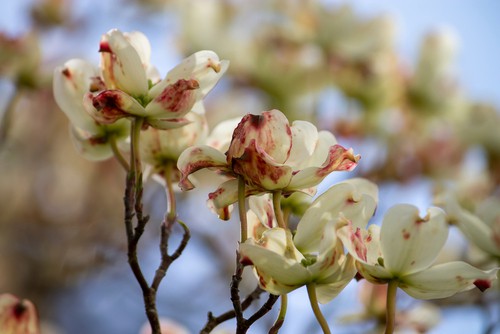
Fighting against Cornus anthracnose
In order to control this fungus, you can remove any infected leaves immediately to reduce the infection in subsequent years. You can also choose resistance species, which include most native European Cornus species, however, the popular Cornus florida and the Cornus nuttallii can be severely affected by this disease.
However, beyond growing resistant varieties there are no fungicides available for gardeners that are proven to work, although it may be worth trying the Provanto Fungus Fighter Concentrate to try and control it.
Honey fungus and root rot
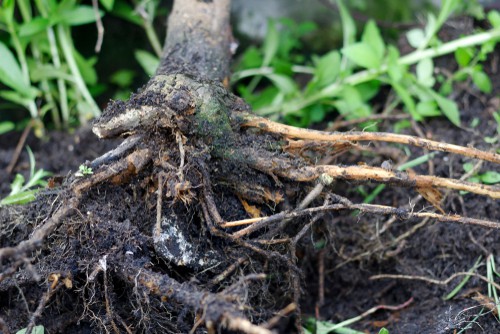
There are some common problems that you might notice, and these include root rot and honey fungus. These are best dealt with using preventative measures. Make sure you have adequate drainage and sunlight for your dogwood to help prevent root rot. Regular mulching and pruning once your Dogwood is established will help with air circulation as well.
Honey fungus can also be sprayed with a fungicide to help treat infected plants.

